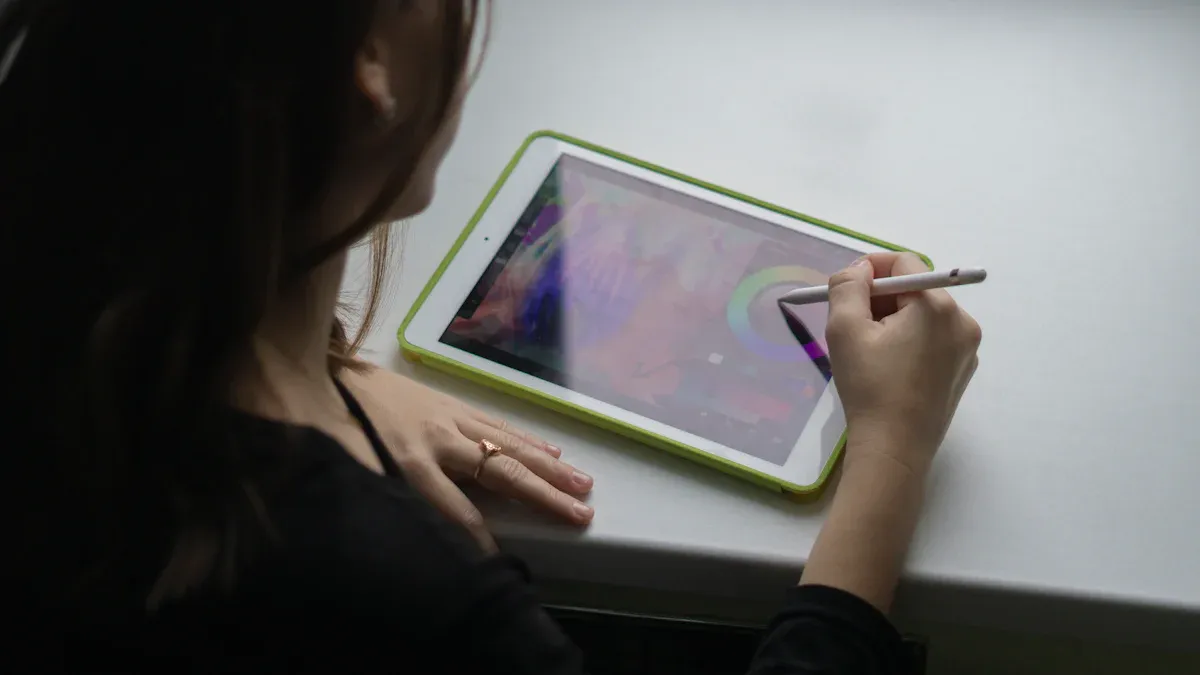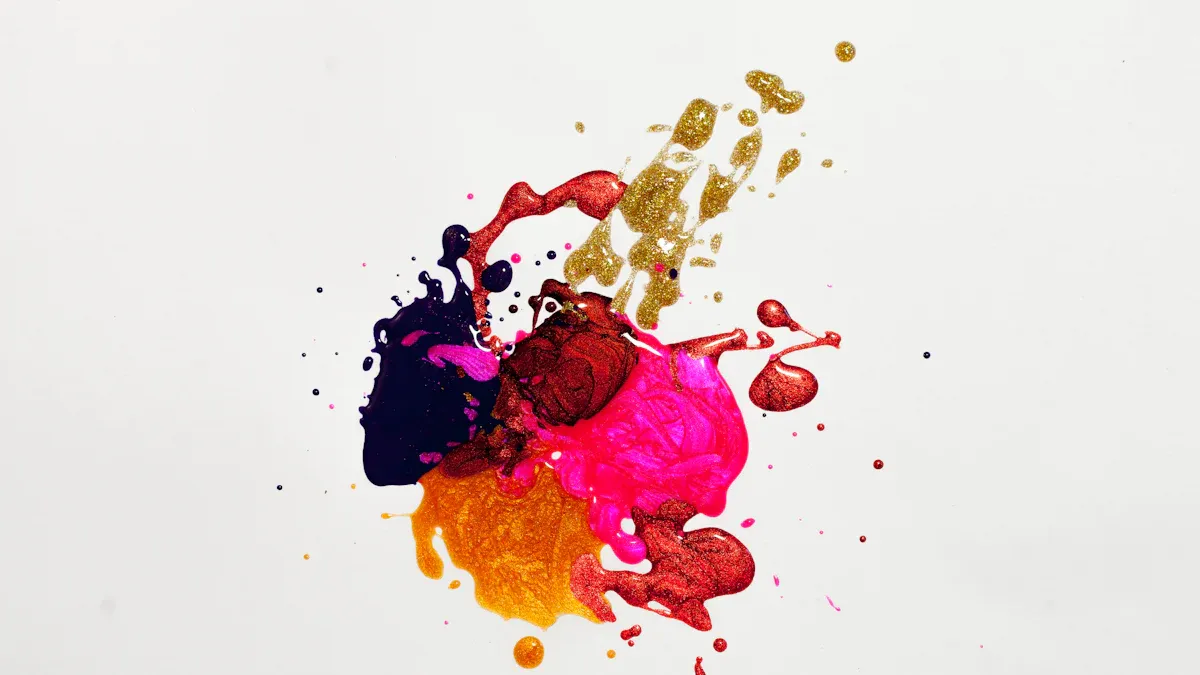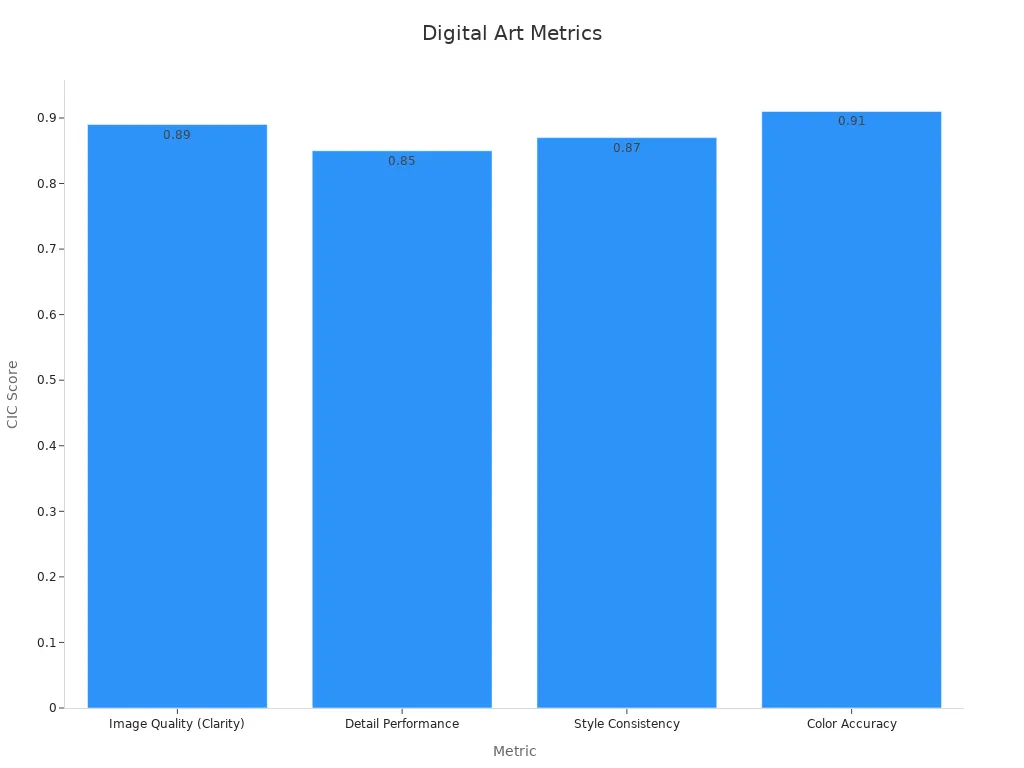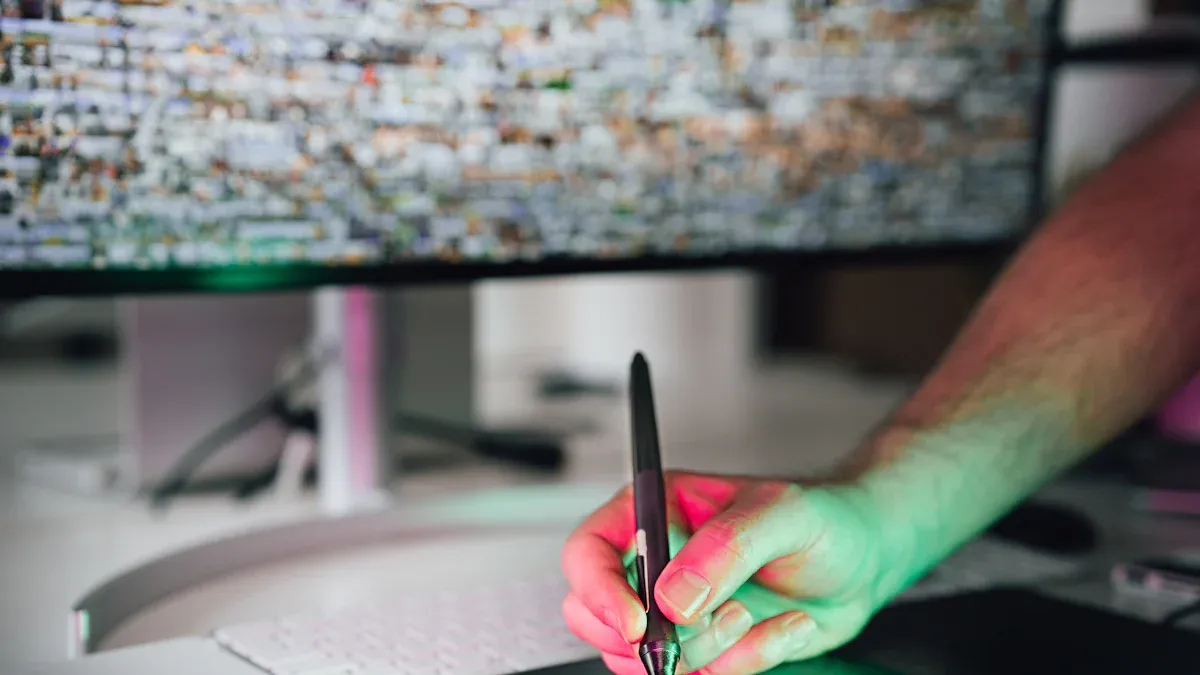Easy Steps to Create Amazing Digital Art for Beginners

Digital art helps you turn your ideas into real creations. It’s becoming popular—software sales may grow from $7.1 billion in 2023 to $19.6 billion by 2033. You don’t need expensive tools to begin. Try digital art, play around, and let your creativity grow.
Using digital tools in animation, movies, and design is driving this rise, making digital art easier to use for everyone.
What You Need to Create Digital Art

Starting digital art is fun and simple. You might wonder what tools are needed. Don’t worry—it’s easier than it seems! Let’s look at three key things: hardware, software, and extras.
Basic Hardware for Beginners
You’ll need some hardware to make digital art. Here’s what you’ll need:
Drawing Tablet: This tool lets you draw on a screen or pad. It gives better control than using a mouse.
Stylus: A stylus is like a pen for your tablet. It helps you draw smooth and detailed lines.
Computer or Tablet: You need a device to run your art programs. A laptop, desktop, or iPad works well, depending on your budget.
You don’t need pricey gear to start. Many affordable options are great for beginners. Brands like Wacom and Huion offer good starter tablets.
Tip: Pick a tablet size that feels right for you. Medium-sized ones are often a good choice.
Important Software for Digital Art
Software is just as important as hardware. It’s where you’ll create your art! Here are some great programs for beginners:
Procreate: This app is easy to use and works well on iPads. It’s great for both beginners and experts.
Adobe Photoshop: Photoshop is powerful and versatile. It’s perfect for learning advanced techniques.
Krita: Krita is free and packed with features. It’s great for painting and sketching.
Clip Studio Paint: This program is popular with comic and manga artists. It has tools for detailed illustrations.
These programs give you a digital canvas and tools to create your art. Choose one that fits your needs and budget.
Useful Extras to Make Art Easier
Some extras can make digital art more enjoyable. They’re not required but can help:
Screen Protectors: A matte protector makes drawing on tablets feel like paper.
Keyboard Shortcuts: A keyboard with shortcuts can save time. Some artists use gaming keyboards for this.
Ergonomic Chair: A comfy chair helps you avoid back pain during long art sessions.
Glove for Drawing Tablets: A glove reduces hand friction on the tablet, making drawing smoother.
These extras aren’t necessary but can improve your experience.
Note: Start with basic tools and add extras later. You don’t need everything right away!
With these tools, you’re ready to start creating digital art. Pick what suits your style and inspires you to create!
How to Make Digital Art: Step-by-Step Guide
Learn the Basics of Digital Tools
Before starting digital art, learn how to use the tools. It’s like figuring out a new gadget—it feels hard at first. But with practice, it becomes easier. Focus on these basics:
Brushes and Tools: Digital art programs have many brush options. Try them out to see how they change your strokes. A soft brush makes smooth shading, while a hard brush creates sharp lines.
Layers: Layers are like clear sheets stacked together. They let you edit parts of your art without changing everything else.
Shortcuts: Keyboard shortcuts save time. For example, "Ctrl+Z" (or "Cmd+Z" on Mac) undoes your last step.
Tip: Begin with simple tools. Slowly explore advanced features to avoid feeling lost.
Learning basics like lines, shapes, and textures is important. Knowing color theory and composition helps make your art stand out.
Master Fundamental Techniques
Once you know the tools, practice basic techniques. These are the foundation of digital art and help you improve.
Sketching: Start with rough sketches to plan your ideas. Don’t aim for perfect—it’s about brainstorming.
Shading and Lighting: Practice shading to add depth. Use light and shadow to make your art look real.
Blending Colors: Use blending tools to mix colors smoothly. This is great for painting skies or skin tones.
Starting with sketches and refining them step by step works well. Picking color schemes early also saves time and effort.
Experiment with Styles and Concepts
Digital art has endless possibilities, so try new things. Testing different styles and ideas helps you find what you love.
Try New Styles: Test various styles, like realism or abstract. Inspiration can come from anywhere.
Play with Themes: Create art based on themes like nature or emotions. This makes your work meaningful and fun.
Use AI Tools: AI tools can help you try new designs and get fresh ideas.
Many beginners feel less pressure when they treat their art as experiments. For example, using limited colors or focusing on empty space can lead to cool results.
Save and Optimize Your Artwork
Save your digital art correctly to keep it safe and high-quality. Follow these tips:
File Formats: Use formats like PNG or TIFF for high quality. JPEG works for smaller files.
Resolution: Set your resolution to 300 DPI for print-ready images.
Backup: Save your files on cloud storage or an external drive to avoid losing them.
Keeping track of file formats and adding metadata helps protect your art for the future.
Yoycol: Turn Your Art into Custom Products
As a print-on-demand (POD) platform, Yoycol enables artists to monetize digital art by transforming it into physical products without inventory or upfront costs.
Core Features
Product Types
Prints & Posters: Upload artwork to sell in various sizes (e.g., framed prints, canvas).
Merchandise: Apply designs to apparel (T-shirts, hoodies), accessories (mugs, phone cases), and home decor.
Platform Integration
Sync designs with Shopify or Etsy stores. Yoycol handles production, packaging, and global shipping automatically.
Getting Started
Select product types (e.g., posters, T-shirts).
Upload high-resolution artwork to Yoycol.
List items on integrated platforms like Etsy or Shopify.
Fun Fact: Digital products sell all day, making them a great way to earn money anytime.

Beginner-Friendly Tools and Software for Digital Art

Procreate: Easy and Powerful
Procreate is a great app for beginners. It works on iPads and is simple to use. The interface is clear, so learning is quick. You can start creating amazing art right away.
Procreate is known for being user-friendly. A study shows 62% of users find it easier than Adobe Photoshop, which only 38% prefer.
With tools like custom brushes and time-lapse videos, Procreate makes creating art fun and simple.
Adobe Photoshop: Professional and Flexible
Adobe Photoshop is a top choice for serious artists. It’s great for beginners who want advanced tools. Photoshop has features like detailed brushes and layer controls. These tools help you create professional-quality art.
In 2022, over 12 million people subscribed to Photoshop. Its popularity comes from its many features and how well it works with other Adobe apps. Whether editing photos or drawing, Photoshop has what you need.
Krita: Free and Packed with Features
Krita is perfect if you want a free tool. It’s open-source and made for artists. Krita has many brushes, textures, and effects. It’s especially good for sketching and painting, making it ideal for beginners.
People love Krita for its easy-to-use design and strong features. It’s a great way to try digital art without spending money. Plus, the Krita community offers helpful guides and tips.
Clip Studio Paint: Best for Comics and Manga
Clip Studio Paint is great for comic and manga fans. It has tools for speech bubbles, panels, and vector layers. These features make it easy to create detailed stories and characters.
Both new and experienced artists enjoy using Clip Studio Paint. It lets you try different styles while focusing on storytelling. From drawing characters to designing scenes, this software has everything you need.
Tip: Many students love these tools because they’re easy to use. They also help improve creativity and give helpful feedback.
Digital art is a fun adventure for beginners. Practice often to improve your skills and explore different styles. Mistakes are helpful—they teach you how to get better. With effort, you can make amazing art and even earn money from it. Get your tools ready and start making art now! 🎨

